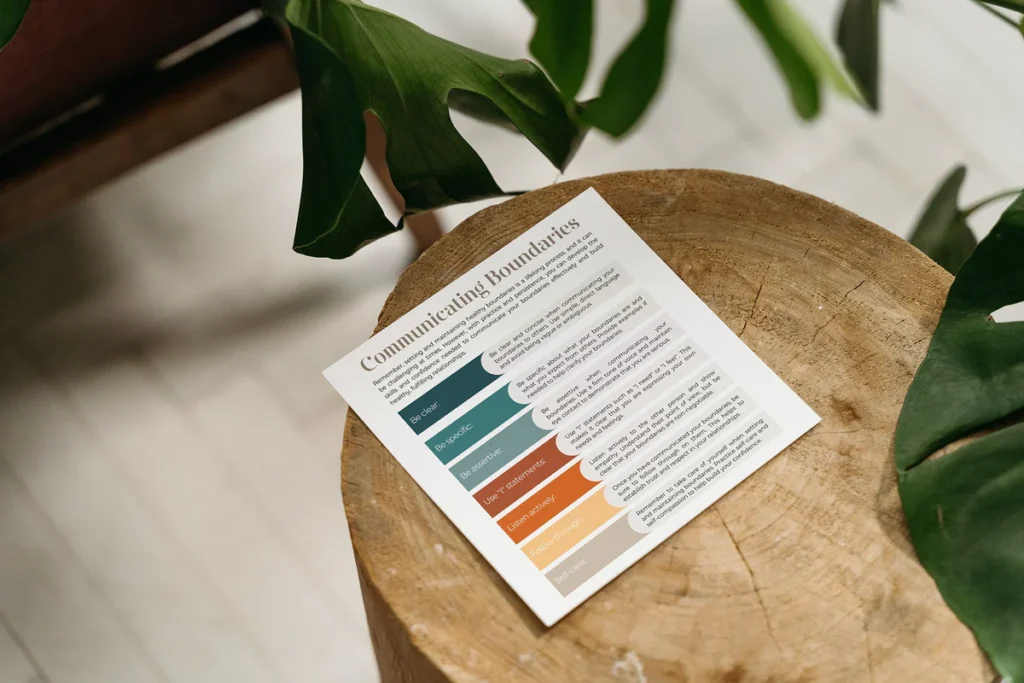Personal boundaries, often invisible yet incredibly significant, are the lines we consciously establish around ourselves to maintain equilibrium and safeguard our physical, emotional, and mental health. They serve as our personal fortress, shielding us from potential harm while also fostering an environment of respect and peace. From a psychological standpoint, the act of setting boundaries is a critical component of self-care and self-respect. It’s about comprehending our individual needs, acknowledging our limitations, and communicating these aspects clearly to the people around us. When we establish healthy borders, we not only create a safe space for ourselves but also cultivate an atmosphere of mutual respect in our relationships, thereby enhancing our interactions with others.
Understanding Your Needs and Limits
The journey towards setting personal boundaries begins with a deep understanding of your needs and limits. This process requires introspection and self-reflection, a conscious effort to identify what makes you feel comfortable and what doesn’t. It’s about recognizing the signs of boundary violations, such as feelings of discomfort, resentment, or being overwhelmed. The act of setting bounds enhances self-awareness, as it necessitates tuning into your feelings and needs. It’s a journey of self-discovery that leads to a deeper understanding of your identity and what you value most in life.
Types of Personal Boundaries

Source: theguardian.com
Personal boundaries can be categorized into several types, each serving a unique purpose in our lives. Physical boundaries involve personal space and physical touch, ensuring our comfort and safety. Emotional borders protect your feelings, ensuring emotional well-being and preventing emotional manipulation or abuse. Time boundaries help you allocate your time effectively, ensuring you have enough time for self-care, personal priorities, and other activities that contribute to your overall well-being. Each type of boundary plays a crucial role in maintaining balance in your life and ensuring your needs are met. One of the ebay ways to get closer to your personal boundaries is to explore new forms of scientific practices such as those that Human Design promotes.
Identifying Boundary Challenges
The process of setting and maintaining boundaries can be fraught with challenges. Past experiences, such as childhood trauma or abusive relationships, can affect your current boundary-setting tendencies, making it difficult to establish healthy bounds. Recognizing enabling behaviors and patterns that cross boundaries is crucial to overcoming these challenges. It’s about understanding your patterns, acknowledging your struggles, and taking proactive steps to change these patterns and establish healthy borders.
The Impact of Lack of Boundaries
The absence or lack of boundaries can have severe psychological consequences. It can lead to feelings of resentment, burnout, and low self-esteem. It can also affect your relationships, leading to unhealthy dynamics and patterns of interaction. Recognizing the impact of boundary violations is crucial to understanding the importance of setting and maintaining healthy bounds. It’s about acknowledging the harm caused by boundary violations and taking steps to prevent such violations in the future.
Benefits of Establishing Clear Boundaries
Establishing clear boundaries has numerous benefits. It leads to increased confidence and assertiveness, as you learn to stand up for yourself and your needs. It also leads to improved communication and conflict resolution skills, as you learn to express your needs clearly and negotiate effectively. Furthermore, it enhances emotional resilience, helping you cope with emotional challenges more effectively. It also reduces stress and prevents burnout, as you learn to manage your time and energy more effectively. By setting borders, you take control of your life and ensure your needs are met.
Setting Boundaries in Different Areas of Life
Setting boundaries is essential in all areas of life. In family relationships, it involves navigating dynamics with parents, siblings, and extended family, ensuring that your needs are respected. In friendships and social circles, it’s about balancing social commitments and personal time, ensuring that you have time for yourself. In work and career, it involves establishing limits with colleagues and supervisors to ensure a healthy work-life balance. Each area of life presents unique challenges and requires unique boundaries, making the process of setting bounds a complex but rewarding journey.
Communicating Boundaries Effectively

Source: helpguide.org
Communicating your boundaries effectively is crucial. This involves using assertive communication techniques and “I” statements to express your needs and preferences. It also involves setting consequences for boundary violations to ensure your boundaries are respected. Effective communication is key to ensuring that your limits are understood and respected by others.
Overcoming Guilt and Fear in Boundary-Setting
Setting boundaries can often lead to feelings of guilt and fear. It’s important to understand that saying “no” is not selfish – it’s necessary for self-care. Strategies for managing pushback or resistance from others can help you overcome these feelings and assert your bounds confidently. It’s about understanding your worth, acknowledging your rights, and standing up for yourself.
Boundaries in Intimate Relationships
In intimate relationships, boundaries foster mutual respect and understanding. They involve negotiating borders with your partner and respecting each other’s limits. Handling conflicts and disagreements related to boundaries is crucial to maintaining a healthy relationship. It’s about understanding each other’s needs, respecting each other’s limits, and working together to create a relationship that meets both partners’ needs.
Maintaining and Reinforcing Boundaries
Maintaining and reinforcing boundaries over time is essential. This involves consistency in boundary-setting and recognizing when adjustments may be necessary. It’s a continuous process of self-reflection, communication, and adjustment. It’s about staying true to your borders, even when it’s difficult, and making changes as necessary to ensure your boundaries continue to meet your needs.
Self-Compassion and Growth in Boundary-Setting

Source: 3harmony.com
Setting boundaries is a journey of self-compassion and personal growth. It’s about embracing imperfection, celebrating progress, and continuously evolving your boundaries to meet your changing needs. It’s an ongoing journey of self-discovery, self-respect, and self-care that leads to a healthier, happier you.
Bottom Line
Setting personal boundaries is a crucial aspect of mental health and well-being. It’s about understanding your needs, respecting your limits, and communicating these clearly to others. By setting borders, you create a safe space for yourself and foster mutual respect in your relationships. It’s a journey of self-discovery, self-respect, and self-care that leads to a healthier, happier you.



